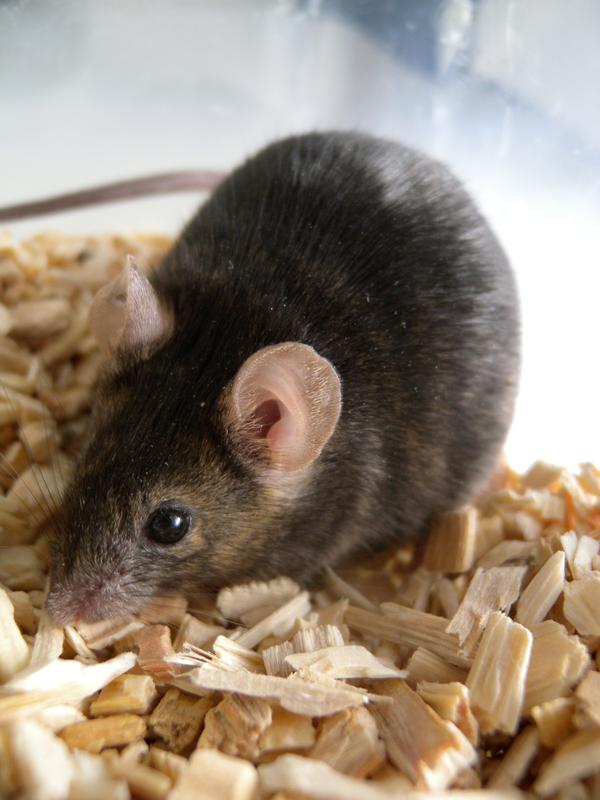Female mice do not avoid mating with unhealthy males

Mating choice is not based solely on odor. (Photo: Susanne Hammerschmid)
Female mice are attracted more strongly to the odour of healthy males than unhealthy males. This had already been shown in an earlier study by researchers from the Konrad Lorenz Institute of Ethology at the Vetmeduni Vienna. Now the team of behavioural scientists went one step further – and tested a common assumption that more attractive males have better mating success than other males.
Females also mate with unhealthy males
Sarah Zala and Dustin Penn investigated whether females would also choose to mate with healthy over infected male if given a choice. In the laboratory and in large enclosures, the females were allowed to freely choose between two males, one healthy and another challenged with a mild infection, which they previously found to alter male odour.
The majority of females, about 86 percent, were initially more attracted to the healthy males. However, unhealthy males were also chosen as mating partners. “That surprised us. We assumed that the females would opt for the healthy males. Not only would this minimise the chance of becoming infected themselves, but choosing a healthy, disease-resistant partner would also be advantageous for their offspring,” first author Zala explains.
Polyandry not unusual for female mice
A genetic analysis of the offspring revealed that about 30 percent of the litters had two fathers, the healthy male and the unhealthy one.
“Many females apparently mate with both males, whether these are healthy or not,” Zala says. “We suspect that the females do this to protect their young. A male that was rejected as a mating partner may commit infanticide in order to get another chance at siring offspring.”
“The females recognise whether males are healthy or unhealthy. We saw this quite clearly. But why they still mate with the unhealthy male remains unclear,” says Dustin Penn.
In the future, Zala and Penn intend to study more closely the effect of an infection on the odour of the animals.
Odour preference seems irrelevant for mate choice
“Until now, scientists generally assumed that females choose their mates depending on their males’ scent or other secondary sexual traits. Our study shows that this isn’t necessarily the case,” says Zala. The situation could be different in the wild. As females recognise healthy males quite well based on odour, and are more attracted to them, they may be more likely to find healthy males in the wild. In the end, odour preference could still be an important factor determining sexual selection.
Service:
The article „Female house mice initially shun infected males, but do not avoid mating with them”, by Sarah M. Zala, Amber Bilak, Michael Perkins, Wayne K. Potts and Dustin J. Penn was published in the journal Behavioral Ecology and Sociobiology. DOI 10.1007/s00265-015-1884-2
http://link.springer.com/article/10.1007%2Fs00265-015-1884-2#page-1
About the University of Veterinary Medicine, Vienna
The University of Veterinary Medicine, Vienna in Austria is one of the leading academic and research institutions in the field of Veterinary Sciences in Europe. About 1,300 employees and 2,300 students work on the campus in the north of Vienna which also houses five university clinics and various research sites. Outside of Vienna the university operates Teaching and Research Farms. http://www.vetmeduni.ac.at
Scientific Contact:
Sarah Zala, PhD
Konrad Lorenz Institute of Ethology
University of Veterinary Medicine Vienna (Vetmeduni Vienna)
T +43 1 25077-7352
sarah.zala@vetmeduni.ac.at
Released by:
Susanna Kautschitsch
Science Communication / Public Relations
University of Veterinary Medicine Vienna (Vetmeduni Vienna)
T +43 1 25077-1153
susanna.kautschitsch@vetmeduni.ac.at
http://www.vetmeduni.ac.at/en/infoservice/presseinformation/press-releases-2015/…
Media Contact
All latest news from the category: Life Sciences and Chemistry
Articles and reports from the Life Sciences and chemistry area deal with applied and basic research into modern biology, chemistry and human medicine.
Valuable information can be found on a range of life sciences fields including bacteriology, biochemistry, bionics, bioinformatics, biophysics, biotechnology, genetics, geobotany, human biology, marine biology, microbiology, molecular biology, cellular biology, zoology, bioinorganic chemistry, microchemistry and environmental chemistry.
Newest articles

Silicon Carbide Innovation Alliance to drive industrial-scale semiconductor work
Known for its ability to withstand extreme environments and high voltages, silicon carbide (SiC) is a semiconducting material made up of silicon and carbon atoms arranged into crystals that is…

New SPECT/CT technique shows impressive biomarker identification
…offers increased access for prostate cancer patients. A novel SPECT/CT acquisition method can accurately detect radiopharmaceutical biodistribution in a convenient manner for prostate cancer patients, opening the door for more…

How 3D printers can give robots a soft touch
Soft skin coverings and touch sensors have emerged as a promising feature for robots that are both safer and more intuitive for human interaction, but they are expensive and difficult…





















